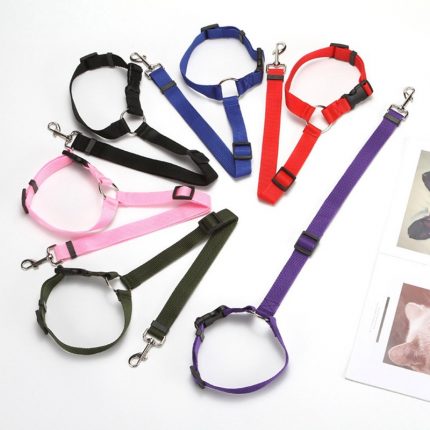Why Does My Dog Hide Her Treats?
Dogs are fascinating creatures with complex behaviors that often leave us puzzled. One behavior that many dog owners have observed is their furry friend hiding treats. It may seem peculiar at first, but there are several reasons why dogs engage in this behavior. Understanding why your dog hides her treats can provide valuable insights into her natural instincts and behaviors.
One possible explanation for this behavior dates back to the wild ancestors of our domesticated dogs. Dogs are descendants of wolves, and in the wild, wolves would often bury their excess food to save it for later. This behavior served as a survival strategy, ensuring they had access to food during times of scarcity. Over time, this instinct may have been passed down to our canine companions, leading them to hide their treats as a way of safeguarding their resources.

Another reason why dogs hide their treats could be related to their territorial instincts. Dogs are known to be territorial animals, and hiding their treats may be a way for them to mark their possessions and establish ownership. By burying their treats or hiding them in specific places, dogs create a sense of security and control over their belongings. This behavior can be particularly prominent in multi-dog households, where each dog may try to hide their treats from others.
Furthermore, hiding treats can also be a form of play and mental stimulation for dogs. Dogs are intelligent creatures that require mental stimulation to prevent boredom and promote overall well-being. Hiding treats engages their natural problem-solving abilities, as they have to use their senses and memory to locate their hidden treasures. This behavior can provide mental exercise and entertainment for dogs, keeping their minds sharp and engaged.
It’s important to note that individual dogs may have their own unique reasons for hiding treats. Some dogs may hide treats out of anxiety or fear, seeking comfort in the act of burying their prized possessions. Others may simply be following a learned behavior, imitating what they have observed from other dogs or even their human companions. Understanding your dog’s specific motivations can help you better address any underlying issues and provide appropriate support and training.
In conclusion, the act of hiding treats is a fascinating behavior exhibited by many dogs. Whether it stems from their ancestral instincts, territorial nature, or the desire for mental stimulation, this behavior offers valuable insights into their innate behaviors and needs. By recognizing and understanding why your dog hides her treats, you can foster a deeper connection with your furry friend and ensure her overall well-being.
The Fascinating Behavior of Dogs Hiding Treats
Dogs have been our loyal companions for centuries, and their behavior never ceases to amaze us. One puzzling behavior that many dog owners have encountered is their furry friend hiding treats. While it may seem like a peculiar habit, there are several reasons why dogs engage in this behavior. Understanding these reasons can shed light on their natural instincts and provide valuable insights into their needs.
1. Instincts from their Wild Ancestors
Dogs, as descendants of wolves, still retain some of their ancestral instincts. In the wild, wolves would often bury excess food to save it for later when prey was scarce. This survival strategy ensured they had access to food during lean times. Over generations, this instinct may have been passed down to our domesticated dogs. So, when your dog hides her treats, she may be instinctually preserving them for future consumption.
2. Territorial Nature and Ownership
Dogs are known to be territorial animals, and hiding treats can be a way for them to establish ownership and mark their possessions. By burying their treats or hiding them in specific places, dogs create a sense of security and control over their belongings. This behavior can be particularly noticeable in multi-dog households, where each dog may try to hide their treats from others, asserting their ownership.
3. Play and Mental Stimulation
Hiding treats can also serve as a form of play and mental stimulation for dogs. Dogs are intelligent creatures that require mental exercise to prevent boredom and promote overall well-being. By hiding treats, they engage their problem-solving abilities, using their senses and memory to locate their hidden treasures. This behavior not only provides mental stimulation but also mimics natural foraging behaviors, which can be fulfilling for dogs.
4. Anxiety and Comfort
For some dogs, hiding treats may be driven by anxiety or fear. Just like humans, dogs can seek comfort in familiar objects or rituals when they feel stressed. Burying treats can provide a sense of security and help alleviate their anxiety. If you notice that your dog frequently hides treats and exhibits signs of anxiety, it’s important to address the underlying causes and provide appropriate support and training.
5. Learned Behavior
Dogs are highly observant creatures and often learn by imitating the behaviors of other dogs or even their human companions. If they witness another dog hiding treats or if their owner frequently hides treats as part of a game, they may adopt the behavior themselves. This learned behavior can become a habit that they continue to practice even when there is no specific reason for it.
Conclusions
In conclusion, understanding Why Does My Dog Hide Her Treats can provide valuable insights into your dog’s behavior and ensure their well-being. For further reading on this topic and related behaviors, visit geepets.com, which offers a wealth of resources on dog care and behavior. Additionally, the American Kennel Club (AKC) website at akc.org is an excellent external resource for comprehensive articles on canine behavior, training tips, and health advice to help you better understand and care for your furry friend. Both of these resources can offer in-depth knowledge and practical advice to help address your concerns and satisfy your curiosity about your dog’s unique habits.

Practical Recommendations for Dealing with Your Dog’s Hiding Behavior
1. Provide Sufficient Mental Stimulation
To address your dog’s instinctual need for mental stimulation and tackle the question of “Why does my dog hide her treats,” incorporate interactive toys and games into their daily routine. Puzzle toys that require them to find hidden treats can be particularly beneficial. This not only satisfies their natural foraging instincts but also keeps their minds engaged and prevents boredom, offering a clue to the puzzle of “Why does my dog hide her treats.”
Engaging in such activities may help you understand the underlying reasons behind “Why does my dog hide her treats,” as it mimics the natural behavior of concealing food for later. This not only answers the question of “Why does my dog hide her treats” by providing them a constructive outlet for their instincts but also enriches their daily life, keeping them mentally sharp and less inclined to engage in potentially destructive behaviors.
2. Create a Safe and Comfortable Environment
If you’re wondering, “Why does my dog hide her treats?” it might be a sign of anxiety or fear. It’s essential to create a safe and comfortable environment for them. Provide a designated space where they can retreat when they feel anxious, such as a cozy crate or a quiet corner of the house, to address the concern of “Why does my dog hide her treats?”
Additionally, consider using calming aids like pheromone diffusers or soothing music to help alleviate their anxiety, which could be the underlying reason behind the question, “Why does my dog hide her treats?” By addressing their anxiety, you’re not just tackling the immediate behavior but also answering the broader question of “Why does my dog hide her treats?” with a compassionate approach. This creates a supportive environment that can help lessen their need to hide treats out of fear or anxiety.
3. Establish Clear Boundaries and Training
To address territorial behaviors and questions like “Why does my dog hide her treats?”, it’s essential to establish clear boundaries and rules within your household. Teaching your dog basic obedience commands and reinforcing them consistently helps in addressing the underlying question of “Why does my dog hide her treats?”. This approach aids in clarifying for them what is theirs and what is not, thereby reducing the need to hide treats as a way of asserting ownership. When pondering over “Why does my dog hide her treats?”, remember that positive reinforcement training techniques can be highly effective in shaping their behavior.
Incorporating these strategies not only provides an answer to the question “Why does my dog hide her treats?” but also promotes a healthy understanding of territory and possession in your dog. By consistently applying these methods, the behavior that leads you to ask “Why does my dog hide her treats?” can be significantly minimized, fostering a more harmonious and understanding relationship between you and your pet.
4. Rotate Treats and Toys
To prevent your dog from becoming possessive or overly attached to specific treats, which might lead you to wonder, “Why does my dog hide her treats?” it’s wise to rotate their treats and toys regularly. This strategy helps avoid fixation on particular items and promotes adaptability, addressing the concern of “Why does my dog hide her treats?” By introducing new treats and toys, you keep their interest piqued and prevent excessive hiding behaviors, which is crucial if you’re trying to understand, “Why does my dog hide her treats?”
Rotating their possessions not only keeps them engaged but also mitigates the question of “Why does my dog hide her treats?” as it diversifies their focus and reduces the likelihood of them becoming overly attached to a single item. This approach ensures that your pet remains adaptable and less likely to engage in the behavior that makes you question, “Why does my dog hide her treats?” Regularly introducing new stimuli in their environment is key to a well-balanced and behaviorally sound pet, ultimately minimizing the instances where you find yourself puzzled by the thought, “Why does my dog hide her treats?”

5. Seek Professional Help if Needed
If you’re wondering, “Why does my dog hide her treats?” and you notice that this behavior becomes excessive, interferes with their daily life, or is accompanied by other concerning behaviors, it may be beneficial to seek assistance from a professional dog trainer or animal behaviorist. They can assess why your dog hides her treats more thoroughly and provide tailored guidance and training techniques to address the underlying issues.
Our featured products:
Understanding “Why does my dog hide her treats?” can reveal much about your dog’s instincts, security, and environment. A professional can help decipher the reasons behind why your dog hides her treats and offer strategies to manage or alter this behavior effectively. So, if you find yourself constantly puzzled by the question, “Why does my dog hide her treats?” and it’s leading to disruptive behavior, professional insight could be invaluable in creating a more comfortable and confident environment for your dog.
6. Be Patient and Understanding
Remember, each dog is unique, and it may take time to understand and address their specific motivations for hiding treats. Patience and understanding are key when working with your furry friend. Avoid punishment or scolding, as this can worsen anxiety or fear-related behaviors. Instead, focus on positive reinforcement, rewarding desired behaviors, and providing a supportive environment.
By implementing these practical recommendations, you can help your dog overcome excessive hiding behaviors, ensure their mental well-being, and strengthen the bond between you and your canine companion. Remember, a happy and content dog is one that feels secure, stimulated, and loved.















